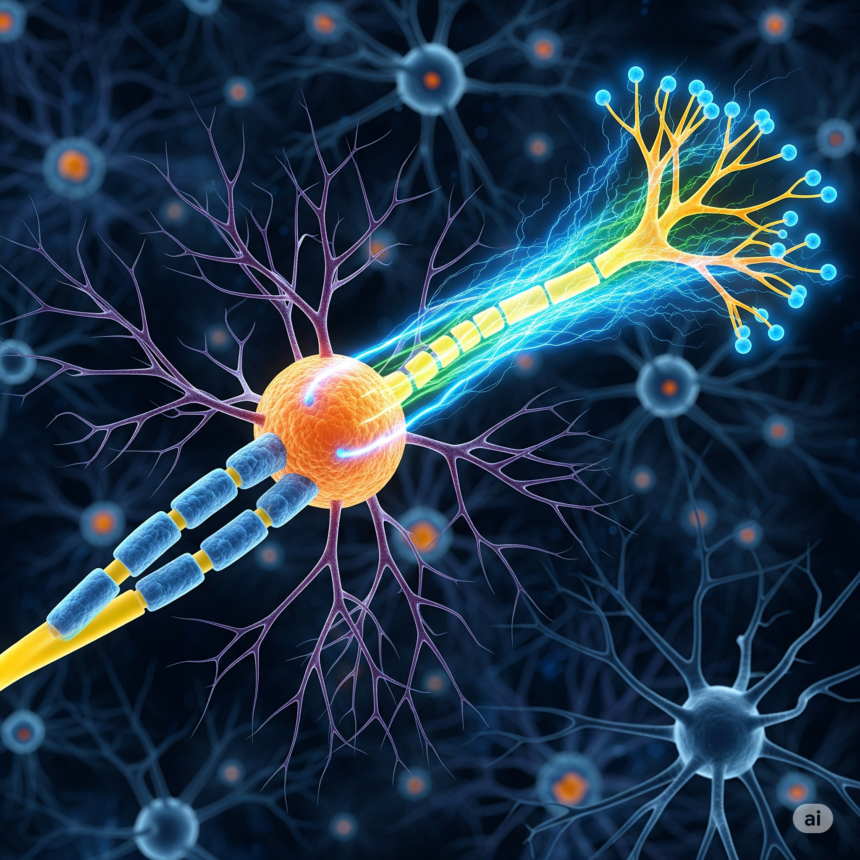Neurons are the fundamental building blocks of the nervous system, acting as the communication network that allows our bodies to process information, control movements, and experience sensations. Understanding how these remarkable cells function provides insight into everything from basic reflexes to complex thoughts and emotions.
What Are Neurons?
Neurons, also known as nerve cells, are specialized cells designed to transmit electrical and chemical signals throughout the body. The human brain alone contains approximately 86 billion neurons, each interconnected with thousands of others, forming an intricate network that underpins our consciousness and bodily functions.
The Structure of a Neuron
A typical neuron consists of three main parts:
-
Cell Body (Soma): Houses the nucleus and is responsible for maintaining the cell’s health and supporting its metabolic activities.
-
Dendrites are branch-like extensions that receive signals from nearby neurons and relay these messages to the neuron’s cell body.
Some neurons also have axon terminals, which release neurotransmitters to communicate with neighboring cells.
How Do Neurons Work?
Neurons communicate through a process called electrical signaling and chemical transmission. The key steps include:
- Resting Potential: When a neuron is inactive, it maintains a voltage difference across its membrane, typically around -70 millivolts.
- Stimulus and Action Potential: When a neuron receives a sufficient stimulus, ion channels open, causing a rapid influx of sodium ions. This depolarizes the membrane, generating an action potential—an electrical impulse that travels along the axon.
-
Propagation is the process through which the action potential moves along the axon, enabled by the opening of voltage-gated ion channels, allowing the electrical signal to reach the axon terminals.
-
Synaptic transmission occurs when the impulse arrives at the axon terminals, prompting the release of neurotransmitters into the synaptic cleft—the tiny gap separating neurons.
-
Receiving Signals: Neurotransmitters attach to receptors on the dendrites of the neighboring neuron, triggering a new electrical impulse.
Types of Neurons
Neurons can be classified based on their functions:
-
Sensory neurons transmit signals from sensory organs to the central nervous system.
-
Motor neurons transmit commands from the brain and spinal cord to the muscles.
-
Interneurons link neurons within the central nervous system, enabling complex processing and communication among them.
Importance of Neurons
Neurons enable various vital functions, including:
- Processing sensory information
- Controlling voluntary and involuntary movements
- Regulating mood and cognition
- Supporting learning and memory
Disruptions in neuron function can lead to neurological conditions such as Alzheimer’s disease, multiple sclerosis, and epilepsy.
Learn More at owngaming.co.uk
Understanding the complex functioning of neurons reveals the incredible marvel of biological engineering within our bodies.If you’re interested in exploring more about the brain, technology, and how they intersect, visit owngaming.co.uk. We provide insights into the latest developments and educational resources to deepen your knowledge about the fascinating world of neuroscience and beyond.












